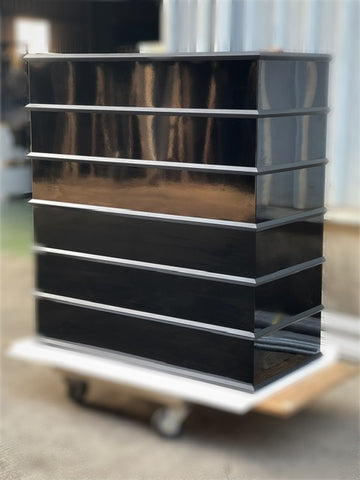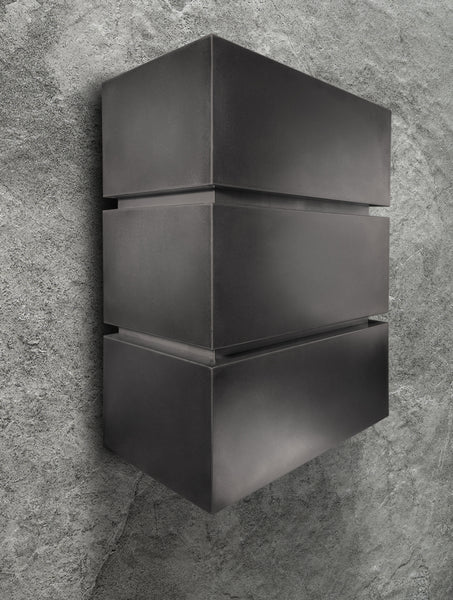Your Cart is Empty
Explore our newest colors - free samples available
Explore our newest colors - free samples available
Explore our newest colors - free samples available
Explore our newest colors - free samples available
November 18, 2023 10 min read
The chrome look of a stainless steel finish and the clear transparency of a glass range hood are examples of a colorful range hood finish. These finishes can bring life and excitement to your kitchen space giving it a unique character. However, without proper maintenance, these looks can fade or end up muted and dull over time. This makes them more of an eyesore rather than stunning decorative pieces they truly are. Proper maintenance is the surefire way to avoid this negative transformation of your range hood finish.
But different range hood finishes require specific maintenance approaches. Factors such as the type of finish, the material used and so much more can impact the maintenance requirements. To simplify the whole maintenance process, we have condensed our cleaning tips into five major sections. This will cover most of the colorful range hoods, giving you an ideal way to maintain that stunning look you are used to by now.

There are a ton of colorful range hood options available that can add vibrancy and personality to your kitchen. These include:

Matte finishes are typically achieved using specialized paints or coatings that provide a smooth, non-glossy surface. This means they require specific care to preserve their appearance and prevent damage. To keep your matte-finished range hood looking like new, follow these steps:

Glass and mirrored finishes are known for their sleek and reflective qualities. They can create a sense of depth and brightness in your kitchen. However, these surfaces are also prone to showing fingerprints, smudges, and dust, which can diminish their brilliance.
To keep these surfaces looking like new, follow these cleaning steps:
Glossy finishes are characterized by their reflective and shiny appearance. They have a smooth surface that enhances the richness and depth of color, creating a visually striking effect in your kitchen. Regular cleaning is essential to keep your glossy range hood looking its best. Here are some techniques to maintain the high shine and luster of glossy finishes:
Maintaining your custom range hood is easy. Metallic finishes on range hoods can include various metals such as copper, brass, or bronze, while stainless steel is a popular choice known for its durability and sleek appearance. To identify metallic finishes, look for distinctive colors and characteristics of each metal. Copper has a reddish-brown hue, brass comes with a yellow-gold appearance, and bronze carries a brownish tone. In contrast, stainless steel presents a silver-gray color with a reflective surface.
It is vital to adhere to appropriate cleaning and maintenance procedures to maintain the pristine appearance of these metallic finishes.
Enamel and ceramic coatings are delicate and prone to chipping, scratching, and discoloration. Their glossy and colorful finish makes them susceptible to damage from harsh chemicals, abrasive cleaners, and rough handling. It's important to understand and respect the fragility and sensitivity of these coatings to maintain their pristine condition.
When cleaning enamel and ceramic-coated range hoods, it is crucial to use gentle techniques that minimize the risk of chipping or scratching. This includes:
Maintaining the brilliance and longevity of colorful range hood finishes requires proper care and precautions. Regardless of the specific finish, there are general maintenance practices that apply to all finishes. Some of the crucial ones include:
Regular maintenance of the range hood filters and the ventilation system is crucial for your range hood's overall functionality and efficiency. Filters capture pollutants generated while cooking. Over time, with the range hood sucking away polluted air, these filters can become clogged. This hinders proper airflow, reduces your range hood's effectiveness, and is a significant fire hazard.
To ensure your range hood's performance isn't impaired and keep its airflow unrestricted, the following cleaning steps are necessary:
It is always a good idea to pay attention to the control buttons and features on your range hood. You really need to clean this area with care to avoid damaging them. The controls are crucial in operating and controlling the kitchen hood effectively.
These are the necessary cleaning steps:
Maintaining the brilliance of colorful range hood finishes is essential to preserve their visual impact. A clean hood definitely enhances the overall aesthetics of your kitchen. You can protect against fading, discoloration, dullness, and damage by following proper maintenance tips and techniques. These are tailored to these finishes. Routine cleaning and attention will ensure that your colorful range hood continues to shine.